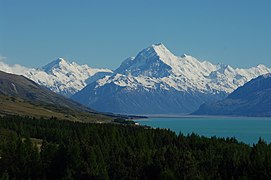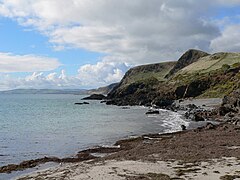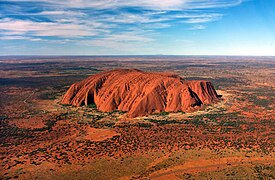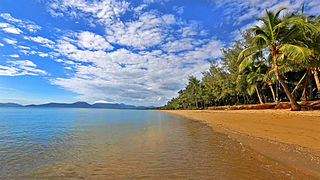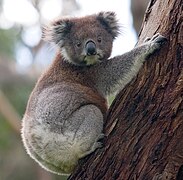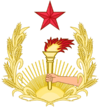Matharius: Difference between revisions
No edit summary |
No edit summary |
||
| Line 40: | Line 40: | ||
|leader_title5 = {{nowrap|[[President of the Senate (Valentir)|President of the Senate]]}} | |leader_title5 = {{nowrap|[[President of the Senate (Valentir)|President of the Senate]]}} | ||
|leader_name5 = {{nowrap|[[Genevieve Cantelli]]}} <small>([[Valentirian Federation of Labour|VFL]])</small> | |leader_name5 = {{nowrap|[[Genevieve Cantelli]]}} <small>([[Valentirian Federation of Labour|VFL]])</small> | ||
|leader_title6 = {{nowrap|[[Speaker of the Assembly | |leader_title6 = {{nowrap|[[Speaker of the Valentirian National Assembly|Speaker of the National Assembly]]}} | ||
|leader_name6 = {{nowrap|[[Lucrezia Fiorentini]]}} <small>([[Valentirian Federation of Labour|VFL]])</small> | |leader_name6 = {{nowrap|[[Lucrezia Fiorentini]]}} <small>([[Valentirian Federation of Labour|VFL]])</small> | ||
|legislature = [[Parliament of Valentir|Parliament]] | |legislature = [[Parliament of Valentir|Parliament]] | ||
| Line 116: | Line 116: | ||
The '''Federal Republic of Valentir''' ({{wp|French language|Gaullican}}: ''République Fédérale de Valentir'') is a {{wp|Sovreign state|sovereign}} country comprising of the mainland of the [[Valentir (Continent)|Valentirian continent]], the island of [[New Embria]] and numerous smaller islands. It is a federal republic composed of 15 constituent provinces, three territories, and various possessions. At 5.6 million km2 and with over 55 million people, Valentir is the largest country in [[Sublustria]] and the 5th largest in the world by total area and the twenty-second most populous country. The capital is [[Valeins]] and the largest city is [[Harborough]], an important global city and financial centre with an urban population of 5.1 million. The country's other major metropolitan areas are [[Valanjou]], [[Dunwall]], [[New Lumbridge]], [[Montsimmard]], [[Winterley]] and [[Haussimont]]. Fourteen of the provinces are on the mainland of the continent. The Province of New Embria is an island located off the west coast of the continent. The various territories and island possessions are scattered about the Sublustrian Ocean, the furthest being [[St. Richard Island]]. The extremely diverse geography, climate, and wildlife of Valentir makes it one of the world's 4 megadiverse countries. | The '''Federal Republic of Valentir''' ({{wp|French language|Gaullican}}: ''République Fédérale de Valentir'') is a {{wp|Sovreign state|sovereign}} country comprising of the mainland of the [[Valentir (Continent)|Valentirian continent]], the island of [[New Embria]] and numerous smaller islands. It is a federal republic composed of 15 constituent provinces, three territories, and various possessions. At 5.6 million km2 and with over 55 million people, Valentir is the largest country in [[Sublustria]] and the 5th largest in the world by total area and the twenty-second most populous country. The capital is [[Valeins]] and the largest city is [[Harborough]], an important global city and financial centre with an urban population of 5.1 million. The country's other major metropolitan areas are [[Valanjou]], [[Dunwall]], [[New Lumbridge]], [[Montsimmard]], [[Winterley]] and [[Haussimont]]. Fourteen of the provinces are on the mainland of the continent. The Province of New Embria is an island located off the west coast of the continent. The various territories and island possessions are scattered about the Sublustrian Ocean, the furthest being [[St. Richard Island]]. The extremely diverse geography, climate, and wildlife of Valentir makes it one of the world's 4 megadiverse countries. | ||
Valentir is considered a {{wp|Regional power|regional}} and {{wp|Middle power|middle power}} in international affairs and is a founding member of the [[Community of Nations]], [[International Council for Democracy]], [[Community of 20|C20]], [[International Trade Organization]], [[Global Institute for Fiscal Affairs]], [[Sublustrian League]], [[Council for Economic Co-operation and Development]] (CECD), [[Cavignac Group]], and other international organizations. | Valentir is considered a {{wp|Regional power|regional}} and {{wp|Middle power|middle power}} in international affairs and is a founding member of the [[Community of Nations]], [[International Council for Democracy]], [[Community of 20|C20]], [[International Trade Organization]], [[Global Institute for Fiscal Affairs]], [[Sublustrian League]], [[Council for Economic Co-operation and Development]] (CECD), [[Cavignac Group]], and other international organizations. Valentir is also a member of the [[Asterian Forum for Development and Cooperation|AFDC]], an observer of [[COMSED]], the [[Organization of Asterian Nations|OAN]], and maintains a bi-lateral alliance with [[Nuxica]]. | ||
A {{wp|Developed country|highly developed country}}, Valentir possesses the Xth largest economy in [[Kylaris]]. It has a {{wp|World Bank high-income economy|high-income}} {{wp|Mixed economy|mixed market economy}}, with the world's Xth highest per capita income. Valentir benefits from a highly skilled and educated workforce; it has among the world's largest proportion of citizens holding a tertiary education degree. Its economy is primarily based around {{wp|Finance|finance}}, {{wp|Telecommunication|telecommunications}}, {{wp|Mining|mining}}, {{wp|Energy industry|energy}} and {{wp|Manufacturing|manufacturing}}. | A {{wp|Developed country|highly developed country}}, Valentir possesses the Xth largest economy in [[Kylaris]]. It has a {{wp|World Bank high-income economy|high-income}} {{wp|Mixed economy|mixed market economy}}, with the world's Xth highest per capita income. Valentir benefits from a highly skilled and educated workforce; it has among the world's largest proportion of citizens holding a tertiary education degree. Its economy is primarily based around {{wp|Finance|finance}}, {{wp|Telecommunication|telecommunications}}, {{wp|Mining|mining}}, {{wp|Energy industry|energy}} and {{wp|Manufacturing|manufacturing}}. | ||
| Line 137: | Line 137: | ||
Estmerish colonisation began in 1644 with the founding of [[New Ardougne]] and its capital, [[Dunwall]], in north-eastern Valentir by Sir [[Martin Black]], a privateer in the service of the [[Estmerish Royal Navy]]. The settlements of [[Harborough]] (1645), [[Draynor]] (1647), [[Axminster]] (1651), [[New Lumbridge]] (1653), and [[Amaranthine]] (1655) further established an Estmerish foothold on the continent. By the late 17th century most of the coast was controlled by either the Estmerish or Gaullicans. Competition between the rival maritime powers spurred rapid expansion. Conflicts between local tribes and petty kingdoms served as a means of proxy warfare between the colonial settlers. Territorial boundaries were in a state of constant dispute as a result of the [[Gilded Wars]]. The turmoil was worsened by the rise of piracy and banditry, both of which would see golden ages during the early 18th century. | Estmerish colonisation began in 1644 with the founding of [[New Ardougne]] and its capital, [[Dunwall]], in north-eastern Valentir by Sir [[Martin Black]], a privateer in the service of the [[Estmerish Royal Navy]]. The settlements of [[Harborough]] (1645), [[Draynor]] (1647), [[Axminster]] (1651), [[New Lumbridge]] (1653), and [[Amaranthine]] (1655) further established an Estmerish foothold on the continent. By the late 17th century most of the coast was controlled by either the Estmerish or Gaullicans. Competition between the rival maritime powers spurred rapid expansion. Conflicts between local tribes and petty kingdoms served as a means of proxy warfare between the colonial settlers. Territorial boundaries were in a state of constant dispute as a result of the [[Gilded Wars]]. The turmoil was worsened by the rise of piracy and banditry, both of which would see golden ages during the early 18th century. | ||
A prominent feature of Estmerish expansion was the establishment of {{wp|Station (Australian agriculture)|Shires}}, a series of homesteads centred around extensive grazing lands for cattle, sheep, pigs and horses. Shires became commonplace by the late 17th century and formed the cornerstone of Estmerish colonial life. The prominent Estmerish founding families expanded their estates steadily during the early 17th and 18th centuries. Overtime the estates became host to a familial manor at the heart of the estate, quarters for the estate's household, and all the necessary accessories of a traditional farmstead. These estates became known as ''Bans'', which was used to denote the head of the estate as well. The word finds its origins from Amathian settlers who found work in the fields of ''the Bannorn'', a huge collective of Bans in Western Valentir, specifically [[Westcliff]], [[Harwich]], and [[ | A prominent feature of Estmerish expansion was the establishment of {{wp|Station (Australian agriculture)|Shires}}, a series of homesteads centred around extensive grazing lands for cattle, sheep, pigs and horses. Shires became commonplace by the late 17th century and formed the cornerstone of Estmerish colonial life. The prominent Estmerish founding families expanded their estates steadily during the early 17th and 18th centuries. Overtime the estates became host to a familial manor at the heart of the estate, quarters for the estate's household, and all the necessary accessories of a traditional farmstead. These estates became known as ''Bans'', which was used to denote the head of the estate as well. The word finds its origins from Amathian settlers who found work in the fields of ''the Bannorn'', a huge collective of Bans in Western Valentir, specifically [[Westcliff]], [[Harwich]], [[Rotorua]], and [[Oneawea]]. | ||
==Early 20th century== | ==Early 20th century== | ||
===The Fair Society=== | ===The Fair Society=== | ||
| Line 168: | Line 166: | ||
===Biodiversity=== | ===Biodiversity=== | ||
<gallery mode="packed"> | <gallery mode="packed"> | ||
File:Kangur.rudy.drs.jpg|The red kangaroo is the largest extant macropod and is | File:Kangur.rudy.drs.jpg|The red kangaroo is the largest extant macropod and is the national animal of Valentir. | ||
File:Koala climbing tree.jpg|The koala does not normally need to drink, because it can obtain all of the moisture it needs by eating leaves. | File:Koala climbing tree.jpg|The koala does not normally need to drink, because it can obtain all of the moisture it needs by eating leaves. | ||
File:Emu showing feet.jpg|The emu is the second largest surviving species of bird. It is | File:Emu showing feet.jpg|The emu is the second largest surviving species of bird. It is the provincial bird of Talissieu. | ||
File:Dingo2.jpg|The dingo was the first placental mammal introduced to Valentir by humans, around 4000 years ago. | File:Dingo2.jpg|The dingo was the first placental mammal introduced to Valentir by humans, around 4000 years ago. | ||
</gallery> | </gallery> | ||
== | ==Government and politics== | ||
{{multiple image | {{multiple image | ||
|align=right | |align=right | ||
| Line 180: | Line 178: | ||
|caption1=[[President of Valentir|President]]<br> [[Helene Pauline]] | |caption1=[[President of Valentir|President]]<br> [[Helene Pauline]] | ||
|alt1= | |alt1= | ||
|width2= | |width2=146 | ||
|caption2=[[Prime Minister of Valentir|Prime Minister]]<br> [[Gaultier Babineaux]] | |caption2=[[Prime Minister of Valentir|Prime Minister]]<br> [[Gaultier Babineaux]] | ||
|image2=Bernie Sanders July 2019 (cropped).jpg | |image2=Bernie Sanders July 2019 (cropped).jpg | ||
|alt2= | |alt2= | ||
}} | }} | ||
=== | ===Executive=== | ||
{{Main|Federal government of Valentir}} | {{Main|Federal government of Valentir}} | ||
Since independence in 1912, Valentir has been a {{wp|Federalism|federal}} {{wp|Semi-presidential system|semi-presidential}} {{wp|Republic|republic}} with a {{wp|parliamentary system}} of governance, with the [[President of Valentir]] serving as {{wp|head of state}} and the [[Prime Minister of Valentir]] serving as {{wp|head of government}}. Power is divided between the legislative, executive, and judicial branches of government, with each branch checking the power of | Since independence in 1912, Valentir has been a {{wp|Federalism|federal}} {{wp|Semi-presidential system|semi-presidential}} {{wp|Republic|republic}} with a {{wp|parliamentary system}} of governance, with the [[President of Valentir]] serving as {{wp|head of state}} and the [[Prime Minister of Valentir]] serving as {{wp|head of government}}. Power is divided between the {{wp|Legislature|legislative}}, {{wp|Executive )government)|executive}}, and {{wp|Judiciary|judicial}} branches of government, with each branch checking the power of its counterparts. This system of {{wp|Separation of powers#Checks and balances|checks and balances}} was inspired by [[Asterian War of Secession|Asterian revolutionaries]]. | ||
The [[President of Valentir]] is elected through a two-round system of voting to serve a 4 year term. While there are no term limits in the Constitution, it was once tradition for presidents to only serve one term. This tradition was broken by President [[Raymond Whitmore]], who served one term from 1952 to 1956. He ran again in 1972 and served until 1980, making him the longest serving head of state in Valentirian history. | |||
Executive power lies in the hands of the President who, unlike heads of state in parliamentary republics, maintains a degree of executive authority and influence in the government, especially concerning foreign affairs, national security, and the {{wp|Promulgation|promulgation}} of laws. The President also may have a hand in the legislature, working with the Prime Minister to influence Parliament's agenda and direct the legislature, though this is very dependent on whether or not the President and Prime Minister share the same political party. Should the President and Prime Minister be from opposing parties it is customary that the president focus primarily on foreign affairs and the Prime Minister focus on internal affairs in what is commonly referred to as {{wp|Cohabitation (government)|cohabitation}}. | |||
In their capacity as head of state the President is also the {{wp|commander-in-chief}} of the [[Valentirian National Defence Force]] and is the chief diplomatic representative of the nation abroad. [[Helene Pauline]] of the [[Progressive Republican Party]] is the current [[President of Valentir]], in office since 5 December 2016. | |||
The [[ | ===Legislature=== | ||
[[File:Parliament Hill (NHSC chart).JPG|250px|thumb|left|The seat of [[Parliament of Valentir|Parliament]] at [[St. Martin's Palace]] in [[Valeins]], [[Vallois]]]] | |||
According to the Constitution legislative power is held solely by the [[Parliament of Valentir]], a bicameral legislature consisting of the [[Senate of Valentir|Senate]] and the [[National Assembly of Valentir|National Assembly]]. The Senate is composed of 150 {{wp|Senator|Senators}}, 10 from each of the 15 provinces. Senators are popularly elected under the {{wp|Single transferable vote|single transferable vote}} system of {{wp|Proportional representation|proportional representation}}. As such the chamber features a multitude of parties vying for power. The Assembly is composed of 600 {{wp|Member of Parliament|Members of Parliament}}, elected using a {{wp|Parallel voting|parallel voting system}}, with 420 seats being elected through {{wp|First-past-the-post voting|first-past-the-post}} in single-member constituencies known as electoral divisions. The other 180 seats are elected using a {{wp|Party-list proportional representation|party-list proportional representation system}}. The Senate and National Assembly convene at St. Martin's Palace in the nation's capital, [[Valeins]]. | |||
The Constitution states that presidential, senate, and assembly elections must be held 4 years after the previous election. While it is the mandate of the constitution to have elections every 4 years, the current Prime Minister may call for a {{wp|Snap election|snap election}} in Parliament before that time. A snap election may only occur if at least a majority of the Senate and National Assembly vote in favour of the motion. | |||
The | The [[Prime Minister of Valentir]] is the chief legislative official and a member of the National Assembly. The Prime Minister is not an elected official, rather they are a {{wp|Member of Parliament}}. The position of prime minister belongs to the person most likely to command the confidence of the Assembly; this individual is typically the leader of the political party or coalition of parties that holds the largest number of seats in that chamber. The prime minister chooses a cabinet, on advice from the president, and its members are formally appointed by the president to form the [[Cabinet of Valentir]], the governing apparatus of the [[Federal government of Valentir]]. [[Gaultier Babineaux]] of the [[Valentirian Federation of Labour]] is the current [[Prime Minister of Valentir]], in office since 1 December 2017. | ||
===Judiciary and law=== | |||
=== | ===Government finance=== | ||
===Foreign relations=== | ===Foreign relations=== | ||
===Military=== | ===Military=== | ||
===Provinces and territories=== | ===Provinces and territories=== | ||
| Line 503: | Line 505: | ||
{{bar percent|{{wp|Irreligion|Irreligious}}|grey|49.8}} | {{bar percent|{{wp|Irreligion|Irreligious}}|grey|49.8}} | ||
}} | }} | ||
=== | ===Immigration=== | ||
{{main|Immigration in Valentir}} | |||
===Healthcare=== | ===Healthcare=== | ||
{{main|Healthcare in Valentir}} | {{main|Healthcare in Valentir}} | ||
Revision as of 20:35, 25 December 2019
Federal Republic of Valentir République fédérale de Valentir | |
|---|---|
Motto: Arduus ad solem "Striving towards the sun" | |
Anthem: "TBD" | |
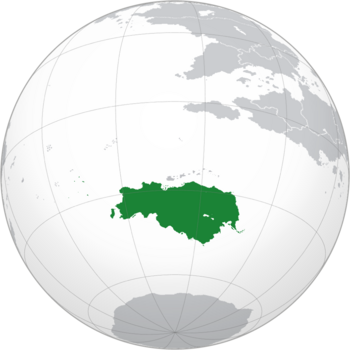 Location of the Federal Republic in Kylaris | |
| Capital | |
| Largest city | |
| Official languages | Estmerish Gaullican |
| Demonym(s) | Valentirian |
| Government | Federal semi-presidential constitutional republic |
| Helene Pauline (PRP) | |
| Gaultier Babineaux (VFL) | |
| Aidan Bishop (NAWP) | |
| Thibault Devaux | |
| Genevieve Cantelli (VFL) | |
| Lucrezia Fiorentini (VFL) | |
| Legislature | Parliament |
| Senate | |
| Assembly | |
| Independence from the Estmerish Empire | |
| 1629 | |
| 1714 | |
| 4 September 1825 | |
| 11 January 1912 | |
| 13 June 1912 | |
| 19 July 1912 | |
| Area | |
• Total | 5,675,532 km2 (2,191,335 sq mi) |
• Water (%) | 1.34 |
| Population | |
• 2019 estimate | 55,051,345 |
• 2015 census | 51,690,103 |
| GDP (PPP) | 2019 estimate |
• Total | $2.604 trillion |
• Per capita | $47,318 |
| GDP (nominal) | 2019 estimate |
• Total | $2.584 trillion |
• Per capita | $46,952 |
| Gini (2019) | medium |
| HDI (2019) | very high |
| Currency | Valentirian Pound (VP, £) |
| Date format | dd-mm-yy |
| Driving side | left |
| Calling code | +61 |
| Internet TLD | .va |
The Federal Republic of Valentir (Gaullican: République Fédérale de Valentir) is a sovereign country comprising of the mainland of the Valentirian continent, the island of New Embria and numerous smaller islands. It is a federal republic composed of 15 constituent provinces, three territories, and various possessions. At 5.6 million km2 and with over 55 million people, Valentir is the largest country in Sublustria and the 5th largest in the world by total area and the twenty-second most populous country. The capital is Valeins and the largest city is Harborough, an important global city and financial centre with an urban population of 5.1 million. The country's other major metropolitan areas are Valanjou, Dunwall, New Lumbridge, Montsimmard, Winterley and Haussimont. Fourteen of the provinces are on the mainland of the continent. The Province of New Embria is an island located off the west coast of the continent. The various territories and island possessions are scattered about the Sublustrian Ocean, the furthest being St. Richard Island. The extremely diverse geography, climate, and wildlife of Valentir makes it one of the world's 4 megadiverse countries.
Valentir is considered a regional and middle power in international affairs and is a founding member of the Community of Nations, International Council for Democracy, C20, International Trade Organization, Global Institute for Fiscal Affairs, Sublustrian League, Council for Economic Co-operation and Development (CECD), Cavignac Group, and other international organizations. Valentir is also a member of the AFDC, an observer of COMSED, the OAN, and maintains a bi-lateral alliance with Nuxica.
A highly developed country, Valentir possesses the Xth largest economy in Kylaris. It has a high-income mixed market economy, with the world's Xth highest per capita income. Valentir benefits from a highly skilled and educated workforce; it has among the world's largest proportion of citizens holding a tertiary education degree. Its economy is primarily based around finance, telecommunications, mining, energy and manufacturing.
Having the second-highest human development index and the fourth-highest ranked democracy globally, the country ranks highly in quality of life, health, education, economic freedom, civil liberties and political rights, with all its major cities faring well in global comparative livability surveys. It is one of the world's most ethnically diverse and multicultural nations, the product of large-scale immigration from many other countries. Valentir has the world's Xth largest immigrant population, with immigrants accounting for 17.3% of the population.
Etymology

The name Valentir is derived from the surname of Amathian explorer Constantin Valentir, who completed several voyages across the Vehemens Ocean under the auspices of the Monarchs of Gaullica. In 1629 Valentir and the crew of HMS Marguerite became the first Eucleans to make landfall on the Valentirian continent. Subsequent Gaullican expeditions would eventually receive colonial charters from King Francois II.
In all official Gaullican documentation from that time Valentir is referred to as Terra Illustris (Solarian: Illustrious Land), a reference to the continents vast landscapes and natural resources. The continent would only be referred to as Valentir after the first Estmerish explorers arrived in the early 1640's. Estmerish cartographer Some Name produced a world map in 1647 on which he named the behemoth continent Valentir in honour of Constantin. At the time it is unknown why a Gaullican backed explorer was chosen for the honour, but historical records eventually revealed that Constantin provided the Estmerish details regarding his findings shortly after his return to Euclea. By the late 18th century Valentir was the international term applied to the continent.
- <Maori name>
- <Xiaodongese name>
History
The first recorded Euclean sighting of the Valentirian mainland, and the first recorded Euclean landfall on the Valentirian continent (in 1629), are attributed to the Gaullicans. The first ship and crew to chart the Valentirian coast and meet with Arateran people was the Couronne captained by Gaullican navigator, Jean-Luc de Valmont. The first settlement, Valanjou, was founded in 1631 as the capital of the Viceroyalty of Ghislaine, the first Gaullican colony. The island continent would be officially named Valentir, after royal decree awarded Valentin de Valeins a charter to establish and oversee colonisation of the island. The establishment of the Viceroyalties of Valmont (1633), Serault (1635), Laussonne (1636), Talissieu (1636), and Giseroux (1640) would follow.
Estmerish colonisation began in 1644 with the founding of New Ardougne and its capital, Dunwall, in north-eastern Valentir by Sir Martin Black, a privateer in the service of the Estmerish Royal Navy. The settlements of Harborough (1645), Draynor (1647), Axminster (1651), New Lumbridge (1653), and Amaranthine (1655) further established an Estmerish foothold on the continent. By the late 17th century most of the coast was controlled by either the Estmerish or Gaullicans. Competition between the rival maritime powers spurred rapid expansion. Conflicts between local tribes and petty kingdoms served as a means of proxy warfare between the colonial settlers. Territorial boundaries were in a state of constant dispute as a result of the Gilded Wars. The turmoil was worsened by the rise of piracy and banditry, both of which would see golden ages during the early 18th century.
A prominent feature of Estmerish expansion was the establishment of Shires, a series of homesteads centred around extensive grazing lands for cattle, sheep, pigs and horses. Shires became commonplace by the late 17th century and formed the cornerstone of Estmerish colonial life. The prominent Estmerish founding families expanded their estates steadily during the early 17th and 18th centuries. Overtime the estates became host to a familial manor at the heart of the estate, quarters for the estate's household, and all the necessary accessories of a traditional farmstead. These estates became known as Bans, which was used to denote the head of the estate as well. The word finds its origins from Amathian settlers who found work in the fields of the Bannorn, a huge collective of Bans in Western Valentir, specifically Westcliff, Harwich, Rotorua, and Oneawea.
Early 20th century
The Fair Society
Great War
Post-war period
Modern history
Environment
Geography
Climate
Biodiversity
Government and politics
Executive
Since independence in 1912, Valentir has been a federal semi-presidential republic with a parliamentary system of governance, with the President of Valentir serving as head of state and the Prime Minister of Valentir serving as head of government. Power is divided between the legislative, executive, and judicial branches of government, with each branch checking the power of its counterparts. This system of checks and balances was inspired by Asterian revolutionaries.
The President of Valentir is elected through a two-round system of voting to serve a 4 year term. While there are no term limits in the Constitution, it was once tradition for presidents to only serve one term. This tradition was broken by President Raymond Whitmore, who served one term from 1952 to 1956. He ran again in 1972 and served until 1980, making him the longest serving head of state in Valentirian history.
Executive power lies in the hands of the President who, unlike heads of state in parliamentary republics, maintains a degree of executive authority and influence in the government, especially concerning foreign affairs, national security, and the promulgation of laws. The President also may have a hand in the legislature, working with the Prime Minister to influence Parliament's agenda and direct the legislature, though this is very dependent on whether or not the President and Prime Minister share the same political party. Should the President and Prime Minister be from opposing parties it is customary that the president focus primarily on foreign affairs and the Prime Minister focus on internal affairs in what is commonly referred to as cohabitation.
In their capacity as head of state the President is also the commander-in-chief of the Valentirian National Defence Force and is the chief diplomatic representative of the nation abroad. Helene Pauline of the Progressive Republican Party is the current President of Valentir, in office since 5 December 2016.
Legislature
According to the Constitution legislative power is held solely by the Parliament of Valentir, a bicameral legislature consisting of the Senate and the National Assembly. The Senate is composed of 150 Senators, 10 from each of the 15 provinces. Senators are popularly elected under the single transferable vote system of proportional representation. As such the chamber features a multitude of parties vying for power. The Assembly is composed of 600 Members of Parliament, elected using a parallel voting system, with 420 seats being elected through first-past-the-post in single-member constituencies known as electoral divisions. The other 180 seats are elected using a party-list proportional representation system. The Senate and National Assembly convene at St. Martin's Palace in the nation's capital, Valeins.
The Constitution states that presidential, senate, and assembly elections must be held 4 years after the previous election. While it is the mandate of the constitution to have elections every 4 years, the current Prime Minister may call for a snap election in Parliament before that time. A snap election may only occur if at least a majority of the Senate and National Assembly vote in favour of the motion.
The Prime Minister of Valentir is the chief legislative official and a member of the National Assembly. The Prime Minister is not an elected official, rather they are a Member of Parliament. The position of prime minister belongs to the person most likely to command the confidence of the Assembly; this individual is typically the leader of the political party or coalition of parties that holds the largest number of seats in that chamber. The prime minister chooses a cabinet, on advice from the president, and its members are formally appointed by the president to form the Cabinet of Valentir, the governing apparatus of the Federal government of Valentir. Gaultier Babineaux of the Valentirian Federation of Labour is the current Prime Minister of Valentir, in office since 1 December 2017.
Judiciary and law
Government finance
Foreign relations
Military
Provinces and territories
| Arms | Province | Capital | Population | Premier | Governing party | |
| Aigremont | Cavignac | 1,678,925 | François Rozenthal | AP-DS | ||
| Dryden | Clovis | 2,361,828 | Stephen Hayes | PRP | ||
| Ghislaine | Valanjou | 5,382,858 | Gaétan Guérin | RPG | ||
| Harwich | Draynor | 831,927 | Edward Hargreaves | PRP | ||
| Kensington | Axminster | 3,271,875 | Issac Barton | PRP | ||
| Laussonne | Brieuil | 2,789,426 | Dominique Perrault | A-CL | ||
| New Ardougne | Dunwall | 3,826,716 | Rosalyn Wescott | NAWP | ||
| New Embria | Winterley | 1,122,473 | Henry FitzRoy | PRP | ||
| Oneawea | Ahuimanu | 982,626 | Arcibald Waldman | VFL | ||
| Rotorua | Tāhaenui | 1,498,147 | Vanessa Duriès | VFL | ||
| Serault | Montsimmard | 3,093,544 | Jean-Pierre Cassel | VFL | ||
| Talissieu | Haussimont | 5,036,810 | Tristan Teyssier | AP-DS | ||
| Tarrington | New Lumbridge | 7,068,056 | Mark Harris | PRP | ||
| Vallois | Valeins | 4,171,253 | Vincent Gladden | PRP | ||
| Westcliff | Harborough | 8,573,639 | Emelia Mayer | NLP |
Economy
Valentir has a high-income mixed market economy which is fueled by abundant natural resources, a highly skilled labour force, a low level of corruption, and a high level of innovation. In 2019 Valentir's estimated nominal GDP was $2.584 trillion, the Xth largest in the world. It is the world's Xth largest exporter of goods, and has the largest national economy in Sublustria and Asteria Inferior.
The Ministry for the Federal Treasury (Ministère du Trésor fédéral) is responsible for setting government expenditure and implementing government financial policy. The Federal Reserve Bank of Valentir is the country's central bank and is responsible for issuing notes and coins in the nation's currency, the pound. Provincial banks retain the right to issue their own notes, subject to retaining enough Federal Reserve notes in reserve to cover their issue. Since 1983 the Federal Reserve, headed by the Chairman of the Federal Reserve, has been responsible for setting interest rates at the level necessary to achieve the overall inflation target for the economy that is set by the Finance minister each year.
Agriculture
Mining
Energy
Infrastructure
Tourism

Demographics
| Rank | State | Pop. | Rank | State | Pop. | ||||
|---|---|---|---|---|---|---|---|---|---|
 Harborough  Shadwell |
1 | Harborough | Westcliff | 5,137,863 | 11 | Draynor | Harwich | 512,365 |  Valanjou  Valeins |
| 2 | Shadwell | Tarrington | 4,793,426 | 12 | Tāhaenui | Rotorua | 493,602 | ||
| 3 | Valanjou | Ghislaine | 2,413,217 | 13 | Cavignac | Aigremont | 487,364 | ||
| 4 | Valeins | Vallois | 2,183,717 | 14 | Clovis | Dryden | 469,246 | ||
| 5 | Haussimont | Talissieu | 1,829,911 | 15 | Amaranthine | Westcliff | 331,491 | ||
| 6 | Dunwall | New Ardougne | 1,345,771 | 16 | Verchiel | Ghislaine | 329,101 | ||
| 7 | Montsimmard | Serault | 947,611 | 17 | Ahuimanu | Oneawea | 302,483 | ||
| 8 | Winterley | New Embria | 701,337 | 18 | Sahrnia | Serault | 261,258 | ||
| 9 | Brieuil | Laussonne | 623,525 | 19 | Gwaren | Tarrington | 252,689 | ||
| 10 | Axminster | Kensington | 566,093 | 20 | Montfort | Talissieu | 206,147 | ||
Ethnic Groups
Race and ethnicity in Valentir
Languages
A multitude of languages are used by Valentirians, with Estmerish, Gaullican being the official, federally mandated languages of Valentir.
Religion
Immigration
Healthcare
Education
Culture
Literature
Media
Music
Sport
Cuisine



